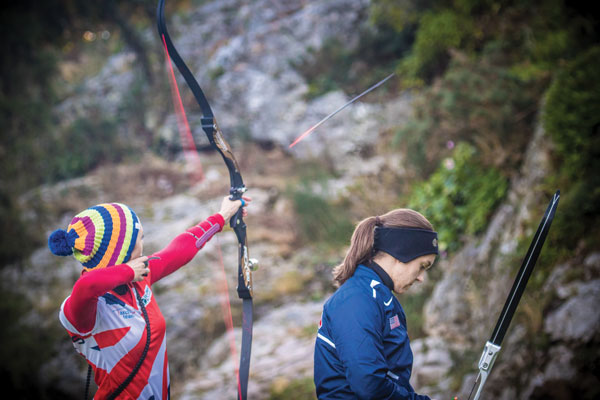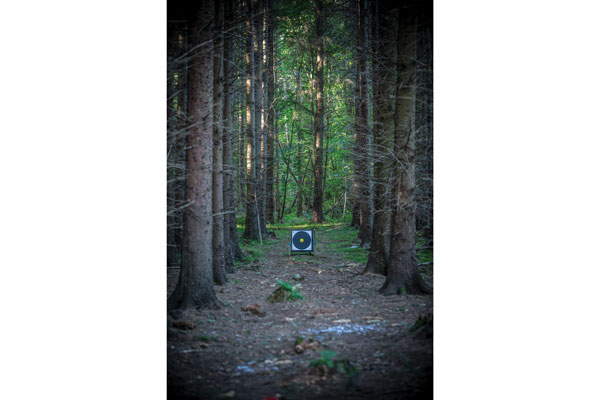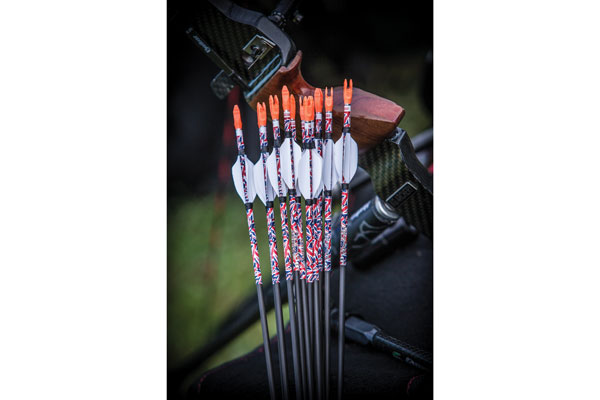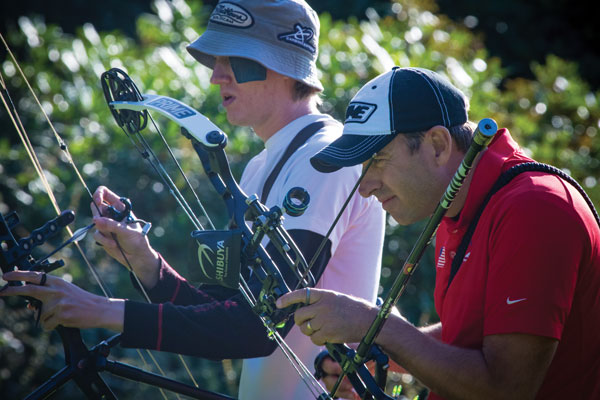Speed Matters: James Park continues his series on arrow selection, this time looking at the factors that influence the best choice for an arrow for field archery

While for target archery we will probably have to deal with wind, for field archery we might or might not. It depends upon the course location.
As I noted in my previous article, I am often asked about how to select the optimum arrows. Where last time I looked at selecting the optimum arrow for target archery, this time I will consider field archery.
Just as we did for target archery, we first need to consider the ways we lose score in field archery and which of those are most influenced by arrow selection.
While for target archery we will probably have to deal with wind, for field archery we might or might not. It depends upon the course location. We deal with wind drift the same way we would do so for target archery – the smallest diameter arrow shaft will drift the least.

The longest distances shot in field archery are shorter than the maximum distances encountered in target, which can have a bearing on arrow selection
In field archery we will almost certainly need to deal with shooting up and down slopes and might not be told the target distances. When shooting up or down hills it is almost always necessary to set your sight for a shorter distance than if you were shooting on the flat, and more so for downhill shots than for uphill. You need to estimate the angle and allow for it in relation to the distance to the target. In some competitions you are permitted to measure the angles but in others, such as for World Archery format tournaments, you are not. The corrections required are greater for longer distances and steeper slopes.
If you are not told the target distance and are not permitted to use a range finder, as in the World Archery unmarked distance round, you first need to estimate it (and there are good techniques to do that), then allow for any slope, and then set your sight. There is a lot of scope for errors and the effect of the errors will be greatest for the longest distance targets (and especially severe when the arrow speed is low, such as for when you are using a recurve bow).
So, for both shooting on slopes and for unmarked distances, the greatest errors are likely to occur when you are shooting the longest distances of the field round, and for World Archery that is for distances around 50-60 metres. We can reduce the effect of the errors if we can obtain a higher down-range arrow speed as that keeps the spacing between sight settings smaller. Consequently, what we would like is an arrow that has a high arrow speed at distances of around 50 metres.

Low-profile vanes and an aerodynamic nock are still good choices for field shooters
To obtain high down-range arrow speed (for a given bow) we need both an arrow of low mass and of low aerodynamic drag. If the drag is too high the arrow will slow down too quickly, even though it might have a high speed as it leaves the bow. That is, low mass alone is not sufficient, we also need to consider the drag.
As noted in my previous article, for a given arrow spine the wall thickness decreases as the shaft diameter is increased. That cannot happen indefinitely as the walls become too thin to avoid the arrow crushing. At some point instead of just using longitudinal carbon fibres there needs to be fibres having at least some circumferential component, and the wall thickness is then not as small as it could have been if only longitudinal fibres were used. This means that instead of the arrow mass per unit length steadily decreasing as the diameter increases for a given arrow spine, we get it first decreasing and then increasing.

The faster your arrow, the smaller the spacings between sight settings and the smaller the margin of error when it comes to estimating distances
For example, for various Easton Technical Products arrows shown in order of increasing shaft diameter we have (from the 2016 catalogue):
X10 410: 8.5 grains per inch
Protour 420: 8.0 grains per inch
ACE 400: 7.5 grains per inch
LightSpeed 400: 7.4 grains per inch
FatBoy 400: 7.8 grains per inch
That gives the ACE and the LightSpeed the lowest mass for the selected arrow spine, and arrow shafts of larger diameter than the LightSpeed increasing in mass. That means that the highest initial arrow speed will be for the ACE or LightSpeed. However, the LightSpeed has a much greater shaft diameter than the ACE so its aerodynamic drag will be much higher and it will slow down a lot more quickly. That higher drag also means that it will drift a lot more in wind.
At 50 metres the arrow speed of the ACE will be the highest for those arrows (and it will be considerably higher than that for the LightSpeed or FatBoy). At longer distances the X10 or Protour will have the highest arrow speed due to their very low drag. This means that at distances around the maximum used for the World Archery field round an arrow of similar specifications to an ACE will give the closest spacing of the sight settings, and hence be most tolerant of errors in estimating slopes or distances.

Steep angled shots, particularly downhill, can also confound range estimation and are another factor that makes a fast arrow a good choice
However, the ACE will drift more in wind than an X10 or a Protour, so if the field course is likely to be windy those arrows could be the better choice. Whereas for target archery I would always use the heaviest point so I can extract the most energy from the bow, it can be useful to use a lighter point for field so that we can increase the arrow speed for the longer distances. As for an arrow for target archery, it is best to use low profile fletching and a nock with a small diameter and of a good aerodynamic shape in order to minimise the drag.
I frequently hear archers say that they prefer to use larger diameter arrows because they are more likely to cut the scoring lines than small diameter arrows. However, if there is any wind the additional wind drift of the larger diameter arrows is much greater than the difference in line cutting ability – even for short distances and very light wind the smaller diameter is superior.
This article originally appeared in the issue 114 of Bow International magazine. For more great content like this, subscribe today at our secure online store www.myfavouritemagazines.co.uk

